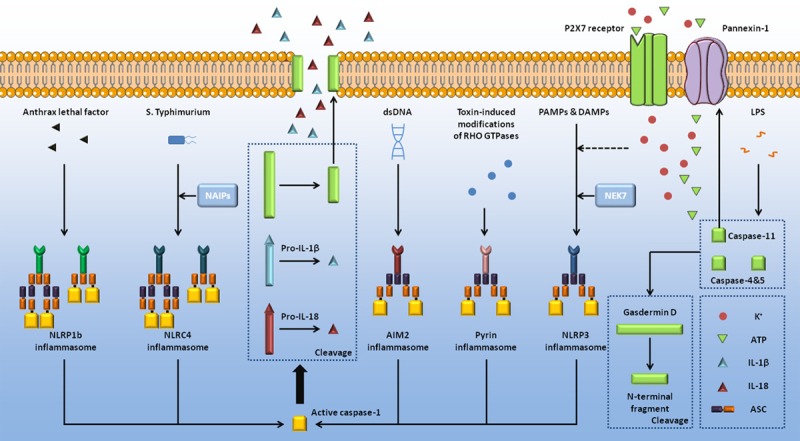Figure 1.

Molecular mechanism of pyroptosis. Induced by certain PAMPs and DAMPs, pyroptopic sensors form a macromolecular complex together with caspase-1, as well as ASC sometimes [23,24]. NAIP proteins [18,19] and NEK7 [17] are required during the formation of NLRC4 inflammasome and NLRP3 inflammasome. The activated caspase-1 can directly cleave gasdermin D [6], of which the N-terminal fragment forms pores on the host cell membrane, mediating the release of cell contents [26-28]. Pro-IL-1β and pro-IL-18 are also cleaved by caspase-1, initiating local or systematic inflammation [29,30]. Human caspase-4, human caspase-5, and mouse caspase-11 can bind to LPS [31-33], and then cause the cleavage of gasdermin D [6], consistent with caspase-1. Caspase-11 can also cleave pannexin-1, inducing the release of cytoplasmic ATP [35]. Extracellular ATP functions as ligand of P2X7 receptor, followed by potassium efflux which initiates the activation of NLRP3 [16].
